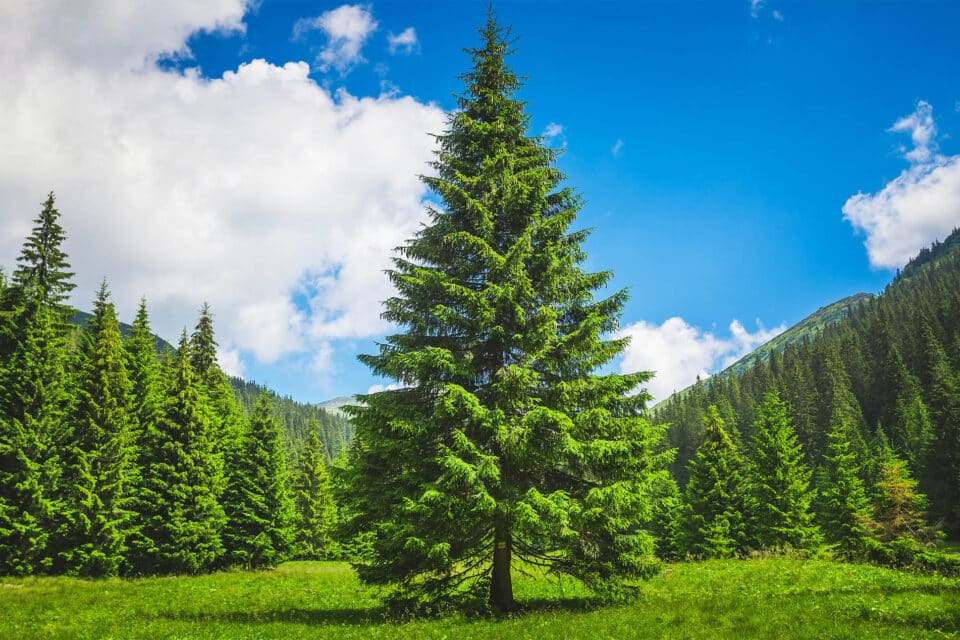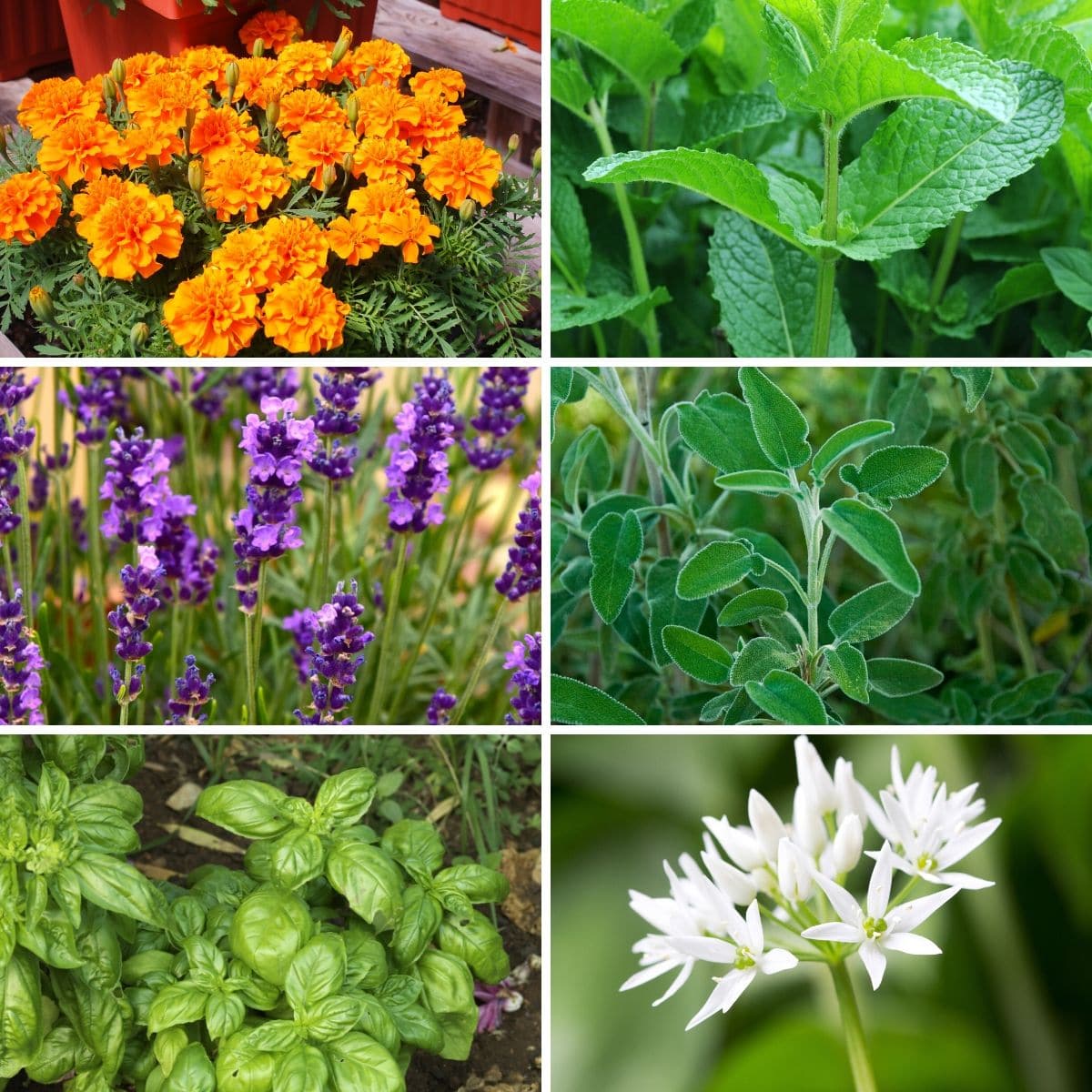Planting a pine tree is not just an act of adding greenery to your surroundings; it’s a commitment to the environment. The process of nurturing a tiny sapling into a majestic pine tree is a rewarding journey that contributes to the overall well-being of our planet.
In fact, studies show that planting trees, such as pine trees, can significantly reduce carbon dioxide levels, thereby combating climate change.
In this comprehensive guide, we’ll explore the step-by-step process of planting a pine tree, from selecting the right sapling to ensuring its healthy growth.

Table of contents
- What is a Pine Tree?
- Why Should You Plant a Pine Tree?
- Choosing the Right Pine Tree Species for Your Location and Purpose
- How to Prepare the Soil and Site for Planting a Pine Tree
- How to Plant a Pine Tree from a Seed
- How to Plant a Pine Tree from a Sapling
- How to Water, Fertilize, and Mulch Your Pine Tree Plant
- How to Prune, Protect, and Pest Control Your Pine Tree Plant
- How to Harvest and Store Pine Tree Products
- FAQs
- Conclusion
- References
- Recommendations
What is a Pine Tree?
A pine tree, belonging to the Pinaceae family, is a common sight in many landscapes. These evergreen wonders boast needle-like leaves and produce cones, adding a touch of nature’s beauty to any environment.
Characterized by their resilience and adaptability, pine trees thrive in various climates, from snowy mountains to sandy plains.
Notably, their needle-like leaves help reduce water loss, making them well-suited for arid regions. These trees play a vital role in the ecosystem, providing habitat for wildlife and contributing to air quality by absorbing carbon dioxide.
See also: Wake Robin: All You Need To Know About The Plants
Why Should You Plant a Pine Tree?
Planting a pine tree is not just a casual act but a meaningful contribution to the environment. Why, you might wonder?
Firstly, pine trees, with their robust and adaptable nature, are excellent oxygen producers. By absorbing carbon dioxide during photosynthesis, they play a vital role in purifying the air we breathe.
Moreover, these trees provide a haven for various wildlife, offering both shelter and sustenance. In urban settings, where green spaces are limited, planting a pine tree helps enhance biodiversity and creates a miniature ecosystem.
Furthermore, pine trees act as natural climate warriors. As they mature, they absorb considerable amounts of carbon dioxide, helping combat global warming. This, in turn, contributes to the overall health of our planet.
Additionally, the aesthetic value of a pine tree is undeniable. Whether in a backyard or a community park, the presence of these evergreens adds beauty and tranquility to the surroundings.
In essence, planting a pine tree isn’t just a personal endeavor; it’s a commitment to a greener, healthier future for generations to come.
See also: Ferns: Are they Perennial Plant ? All you need to know
Choosing the Right Pine Tree Species for Your Location and Purpose
Selecting the appropriate pine tree species is a pivotal step in ensuring successful growth.
Firstly, consider your geographical location. Different pine tree varieties thrive in specific climates, so it’s crucial to choose one that suits your region. If you reside in a colder area, options like the Eastern White Pine or Scots Pine may be ideal, while the Ponderosa Pine thrives in drier climates.
Moreover, some pine trees are more ornamental, while others are better for timber production. Understanding your purpose helps narrow down the choices.
Additionally, assess the available space. If you have limited room, a compact variety like the Mugo Pine might be suitable, whereas larger spaces can accommodate the majestic presence of a Longleaf Pine.
Furthermore, consider soil conditions. Different species have varying soil preferences, so understanding your soil type is crucial. Sandy soils may suit certain varieties, while others may thrive in loamy or clayey soils.
By thoughtfully evaluating these factors, you ensure that the pine tree you choose not only survives but thrives in its designated environment.
See also: Straw Bale Gardening: A Beginner’s Guide
How to Prepare the Soil and Site for Planting a Pine Tree
When preparing the soil for planting a pine tree, start by choosing a well-draining site with ample sunlight. Clear the area of any existing grass or weeds, providing a clean slate for your tree’s roots to establish themselves.
Afterward, loosen the soil to enhance aeration and water penetration. This step is pivotal in creating a welcoming environment for your soon-to-be-planted pine tree.
Digging the planting hole comes next, a task that requires careful consideration. The hole should be twice as wide as the root ball and of equal depth.
However, this provides sufficient space for the roots to spread and prevents planting the tree too deep. Break up the soil at the hole’s bottom to encourage downward root growth.
As you place the pine tree into the hole, ensuring the top of the root ball aligns with the surrounding soil level is crucial. Backfill the hole with soil, eliminating any air pockets around the roots. Thoroughly water the tree to settle the soil and provide initial hydration.
Mulching the area around the tree serves multiple purposes. It retains moisture, suppresses weed growth, and regulates soil temperature. Use organic mulch materials like wood chips or bark, leaving a gap near the trunk to prevent rot.
This comprehensive preparation ensures your pine tree starts its journey with the best possible foundation for healthy growth.
See also: Top 10 Spring Plants you don’t know about
How to Plant a Pine Tree from a Seed
Planting a pine tree from a seed is a rewarding journey that begins with proper preparation. Start by selecting healthy seeds from a reliable source. Once you have your seeds, soak them in water for a day to enhance germination.
After soaking, place the seeds in a plastic bag with moist peat moss and refrigerate them for several weeks. This process, known as stratification, mimics winter conditions and encourages uniform germination.
When ready to plant, choose a well-draining soil in a sunny location. Create furrows in the soil, placing the seeds at regular intervals. Cover them with a thin layer of soil and water gently. Patience is key during this stage, as germination may take several weeks.
As the seedlings emerge, provide adequate sunlight and water. Transplant them into larger containers as they grow, ensuring proper spacing. Once the seedlings have reached a suitable size, they are ready for outdoor planting.
Choose a location with well-prepared soil and follow the steps for planting a pine tree from a sapling. Keep in mind that growing a pine tree from seed requires time and care, but the satisfaction of watching it develop from a tiny seedling into a majestic tree is truly worth the effort.
See also: How to Propagate Aloe: Plant Cultivation Method
How to Plant a Pine Tree from a Sapling
Planting a pine tree from a sapling is a straightforward yet crucial process in ensuring the tree’s successful growth. Begin by selecting a healthy sapling from a reputable nursery, focusing on a variety suitable for your climate. When ready to plant, choose a sunny location with well-draining soil.
Start by digging a hole that is twice as wide as the sapling’s root ball and just as deep. This ample space allows the roots to spread and establish themselves.
Carefully remove the sapling from its container, taking care not to disturb the roots. Place it in the center of the hole, ensuring the top of the root ball aligns with the surrounding soil.
Backfill the hole with soil, pressing it down gently to eliminate air pockets. Water the sapling thoroughly to help settle the soil and provide essential hydration. Applying a layer of mulch around the base of the tree helps retain moisture and suppresses weed growth.
In the initial stages, monitor the sapling closely, providing adequate water and protection from pests. As it grows, follow the general care guidelines for maintaining a healthy pine tree.
By following these steps, you set the stage for a thriving pine tree that will contribute to the beauty and environmental well-being of your surroundings.
See also: How Far Apart to Plant Tomatoes: Gardening Spacing Technique
How to Water, Fertilize, and Mulch Your Pine Tree Plant
Watering, fertilizing, and mulching are essential components of caring for your pine tree plant. When it comes to watering, provide consistent moisture during the tree’s initial stages.
Ensure deep watering to encourage the development of a robust root system. Periodically check the soil moisture, adjusting your watering routine based on weather conditions.
For fertilization, apply a balanced fertilizer sparingly during the first year of growth. Avoid over-fertilizing, as this can harm the young tree. As the pine tree matures, adjust the fertilizer regimen based on its specific needs and the soil composition.
Mulching is a simple yet effective practice to retain soil moisture and suppress weed growth. Use organic mulch materials, such as wood chips or bark, and spread them in a circle around the tree, leaving a gap near the trunk to prevent rot.
These three practices work synergistically to promote the health and vitality of your pine tree. Consistent care, especially in the early years, ensures the establishment of a resilient tree that will contribute to the beauty of your landscape and the well-being of the environment.
See also: How to Propagate Monstera: Green Thumb Techniques for Lush Plant Growth
How to Prune, Protect, and Pest Control Your Pine Tree Plant
Pruning, protecting, and pest control are integral to maintaining the health of your pine tree plant. When it comes to pruning, use clean, sharp pruning shears to remove any dead or diseased branches. Regular pruning enhances the tree’s structure and appearance, but be cautious not to over-prune, as it may stress the tree.
Protecting your pine tree involves taking measures against potential threats. Install physical barriers like tree wraps to shield against winter sunscald and protect the trunk from damage. Additionally, guard the tree against animal browsing by using fencing or repellents.
Pest control is a crucial aspect of pine tree care. Regularly inspect your tree for signs of pests like bark beetles or bagworms. If detected, promptly apply suitable insecticides to prevent infestations. Consider introducing natural predators like ladybugs to help control pest populations without the use of chemicals.
By incorporating these practices into your pine tree care routine, you contribute to the tree’s resilience and overall well-being. Vigilance in pruning, protecting, and pest control ensures that your pine tree thrives, providing beauty to your surroundings and contributing positively to the ecosystem.
See also: Lewisia: All you need to know about the Garden Flower
How to Harvest and Store Pine Tree Products
Harvesting and storing pine tree products is a rewarding culmination of your tree care efforts. When harvesting pine cones or seeds, timing is crucial.
Gather cones when they are fully mature, typically in late summer or early fall. To extract seeds, allow the cones to dry, then shake or twist them to release the seeds.
Once harvested, store seeds in a cool, dry place in a breathable container. Regularly check for moisture to prevent mold. If storing for an extended period, consider refrigeration to maintain seed viability.
For pine needles, harvest throughout the year, but the highest oil content is in the spring. Use pruning shears to trim branches, ensuring not to remove too much foliage. Dry the needles thoroughly before storing them in airtight containers to preserve their fragrance and utility.
If you’re harvesting pine timber, choose the appropriate time based on the tree’s growth. Store lumber in a well-ventilated area to prevent mold or warping. Properly dried and stored pine timber is versatile for various construction and woodworking projects.
By understanding the nuances of harvesting and storing pine tree products, you maximize the benefits of your tree, whether for propagation, crafting, or construction, making your pine tree a sustainable and multifaceted asset.
See also: What Does it Mean to Dream About Plants?
FAQs
Pines grow well in full sun and average- to medium-moisture well-drained soil. There are many species of pine. For best success, search for a species that is native to your region. For example, an eastern white pine is native to the northeast United States and Canada.
Eastern white pine and green giant arborvitae are some of the fastest-growing evergreens. Each add on about 2 feet every year!
Pines are long-lived and typically reach ages of 100–1,000 years, some even more. The longest-lived is the Great Basin bristlecone pine (P. longaeva). One individual of this species, dubbed “Methuselah”, is one of the world’s oldest living organisms at around 4,800 years old.
Conclusion
Planting a pine tree is a fulfilling endeavor that goes beyond the simple act of gardening. It’s a commitment to the well-being of our planet and future generations.
By following this step-by-step guide, you can ensure the successful establishment and growth of your pine tree.
Remember, each pine tree planted is a small contribution to a larger, collective effort in combating climate change and creating a sustainable future.
References
- Howstuffworks.com – How to Plant a Pine Tree
- Chefd.com – How to Grow Pine Trees From Seeds?




